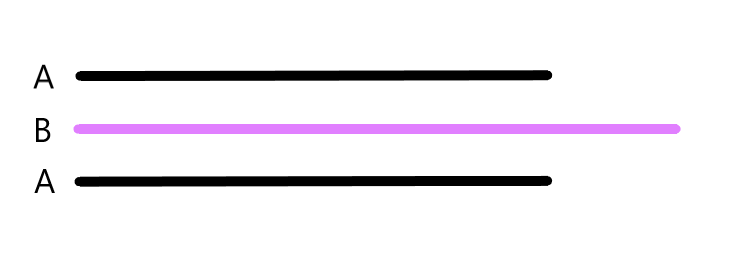Musical forms are fundamental to understanding the architecture of music. They are, in essence, the blueprints of a composition, outlining how a piece of music is constructed. Think of musical forms as the skeletal framework around which melodies, harmonies, and rhythms are draped. This structure not only gives a piece its shape and character but also guides the listener’s experience, creating expectations and evoking emotions.
In the realm of music, there are various forms, each with its unique set of rules and characteristics. These range from simple structures to more complex ones celebrated for its recurring themes and variations. Understanding these forms is useful for both music creators and enthusiasts, as it enhances the appreciation of the nuances in compositions.
Now, let’s delve into one such intriguing form: the ternary form. Renowned for its simplicity yet profound impact, ternary form holds a special place in the history and evolution of music. In the next sections, we will explore its definition, structure, variations, and significance in the world of music.

Decoding ternary form: the basics
The ternary form, often symbolized as ABA, is a musical structure consisting of three distinct sections. The beauty of this form lies in its symmetry and balance. The first section (A) introduces a theme or melody, which is then contrasted by a different theme in the second section (B). The third section (A) revisits the initial theme, often with subtle variations, bringing the composition full circle.
Historical context and evolution of ternary form
Ternary form has deep historical roots, tracing back to the classical period and beyond. Its simplicity made it a popular choice among composers for its ability to create a clear and memorable structure. Over the centuries, this form evolved, with composers experimenting with its basic principles to add complexity and depth to their works. Ternary form’s adaptability is a testament to its enduring relevance in music composition.
This structural approach is not just confined to classical music; it has found its way into modern genres as well, showcasing its versatility and universal appeal. The ternary form serves as a foundational element in understanding the development and progression of musical compositions.
Exploring the structure of ternary form
Understanding the structure of ternary form in music is crucial for both aspiring musicians and avid listeners. The ternary form, often referred to as ABA form, provides a clear and balanced structure that is both easy to follow and rich in musical expression.
Detailed explanation of ternary form structure
In the context of ternary form music, the first section (A) introduces a main theme or melody. This section sets the tone and character of the piece. It’s often memorable and distinct, laying the groundwork for the contrasts that follow.
The middle section (B) offers a contrast, either through a change in melody, key, rhythm, or texture. This section provides a sense of departure and exploration, often taking the listener on a different musical journey. Finally, the third section (A) returns to the original theme, sometimes with variations or developments, bringing a sense of closure and resolution.
Diagrammatic representation of ternary form
To visualize the ternary form structure, imagine a simple diagram: one line representing the first A section, followed by a contrasting line for the B section, and then a return to a line similar to the first, representing the final A section. This visual representation helps in understanding the symmetry and balance inherent in ternary form music, making it a favorite among composers and listeners alike.

The ternary form’s clear structure makes it an excellent subject for analysis, especially for beginners who are just starting to explore the intricacies of musical composition. As we progress, we will look into the various iterations and complexities that this form can take, including the simple ternary form and the compound ternary form, providing deeper insights into what is ternary form in music.
Variations of ternary form in music
Ternary form in music is not monolithic; it comes with variations that add depth and diversity to musical compositions. Let’s explore two primary variations: the simple ternary form and the compound ternary form.
Simple ternary form
Simple ternary form, as the name suggests, adheres to a straightforward ABA structure. Each section is typically self-contained, with clear demarcations. The A section presents a theme, the B section provides contrast, and the A section returns, often with slight modifications. This form is prevalent in many classical and folk compositions. For instance, many of Chopin’s mazurkas and minuets from various composers exemplify the simple ternary form.
Compound ternary form
In compound ternary form, each of the ABA sections is itself structured in a smaller ternary (A-B-A) form, creating a more complex and layered composition. This approach allows for greater thematic development and variation. It’s akin to nesting one ternary form within another, hence the term “compound.” Notable compositions in this form include movements from Beethoven’s sonatas and certain sections of larger symphonic works, where the intricate layering of themes creates a rich tapestry of sound and emotion.
Ternary form within ternary form
Delving into the complexities of musical composition, we encounter an intriguing phenomenon: the nesting of ternary form within itself. This intricate structure showcases the depth and versatility of ternary form in music.
Explanation of this nested structure
Imagine a musical piece where not only the whole composition but also individual sections follow the ternary structure. In this arrangement, the A and B sections of the larger ternary form (ABA) are themselves composed in a smaller ternary form (A-B-A). This results in a sophisticated layering effect, offering a rich and varied musical experience. It’s like a musical matryoshka doll, where each layer reveals another equally intricate layer.
Examples from classical and modern music
Classical music provides some of the best examples of this complex arrangement. Composers like J.S. Bach and Franz Schubert have utilized this technique to add depth to their compositions. For instance, certain movements in Bach’s “Brandenburg Concertos” exhibit this nested ternary form. In the realm of modern music, some contemporary compositions and jazz pieces also employ this technique, using it to create a dialogue between traditional and innovative musical ideas.
This complex arrangement of ternary form demonstrates the adaptability and enduring relevance of this musical structure. It challenges the composer and engages the listener, offering a multidimensional perspective on the thematic and harmonic development within a piece.
Practical applications of ternary form in compositions
Analyzing ternary form in music is not just an academic exercise; it’s a practical tool for both musicians and music enthusiasts to deepen their understanding of musical composition and appreciation.
Step-by-step guide to analyzing ternary forms
- Identify the sections: Begin by delineating the A and B sections. Listen for changes in melody, harmony, rhythm, or texture to identify the transitions.
- Examine the themes: Pay attention to how the themes are presented in the A sections and how they differ or develop each time they return.
- Explore the contrast: The B section often provides contrast. Explore how this is achieved – through key changes, rhythmic variations, or different musical textures.
- Notice the variations: In the final A section, look for variations or developments that differentiate it from the initial presentation.
The summary of the video
The video explains ternary form as a three-part musical structure consisting of an opening section (A), a contrasting middle section (B), and a restatement of the opening (A or A’). The A section presents thematic and harmonic materials, while the B section introduces contrast through key changes or developmental elements, adding tension. The restatement of the A section resolves this tension by returning to the initial themes and the home key.
The video also highlights the differences between ternary and rounded binary forms, noting that in ternary form, the B section and the A restatement are independent, with the restatement often being as extensive as the original A section. Ternary form can vary from simple structures with each section representing a distinct musical idea to compound forms where sections include embedded binary or ternary forms.
Central to the video is the concept of statement-contrast-restatement, a fundamental principle in musical composition, which ternary form exemplifies. This concept is essential for understanding the structure and development of many musical pieces.
The significance of ternary form in musical composition
Ternary form’s significance in music cannot be overstated. It offers a perfect blend of repetition and contrast, creating an engaging musical narrative. This form has enabled composers to express complex emotions and ideas, while providing listeners with a clear and cohesive listening experience. Its enduring popularity is a testament to its effectiveness in communicating musical ideas.
It exemplifies the beauty of musical structure and its impact on the listener’s experience. As we continue to explore and understand musical forms like ternary form, we not only deepen our appreciation of music’s past but also enrich its future.
Author of this blog post:

Eddie Bond is a multi-instrumentalist performer, composer, and music instructor currently based in Seattle, Washington USA. He has performed extensively in the US, Canada, Argentina, and China, released over 40 albums, and has over a decade experience working with music students of all ages and ability levels.















